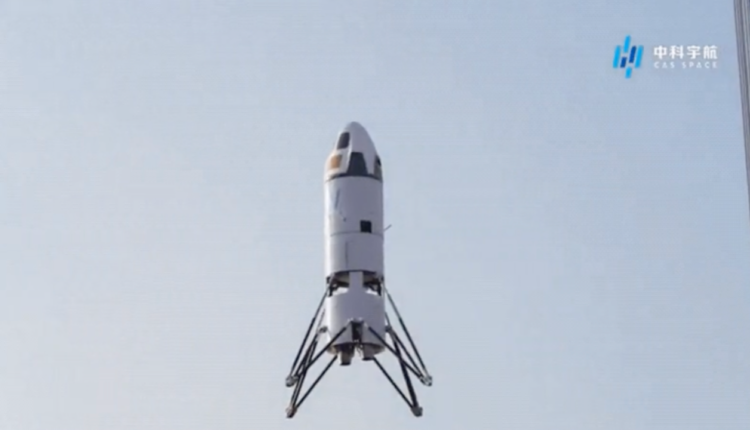©2021 Reporters Post24. All Rights Reserved.
It was one small step for China, but a modest leap that could open up a whole new world for the country’s aerospace industry. Guangzhou-based company china CAS Spacex recently flew a small rocket-like prototype outside a Chinese coastal city before landing it upright on a sea-based platform. The successful test flight and landing could eventually change the game for the Chinese rocket industry.
CAS Space, which is partly owned by the Chinese Academy of Sciences, launched a small simulated rocket in Haiyang, east China, according to China’s Global Times.
The rocket prototype weighs around 205 pounds (93 kilograms) and is powered by twin engines, including a turbojet engine that simulates the kind of variable thrust liquid rocket engine that’s used during vertical landings, the Global Times reported. The vehicle flew no higher than about 3,280 feet (1,000 meters) before reverse engine thrust enabled it to hover back down onto the awaiting sea platform. The test lasted for 10 minutes, but the demonstration could eventually lead to rocket stage reusability, similar to how its U.S. counterpart, SpaceX, does it.
Vertical Landing in China
The company announced that its vertical landing test was a success, with the rocket recovery technology possibly being applied to future rocket models like the Lijian-3 and Lijian-3 heavy-lift launchers, Global Times reported.
SpaceX has become a pro at landing its boosters upright. In 2015, the company performed a successful landing for the first time following a year of trial and error. The rocket’s first stage uses thrust to control its descent, landing on four legs made of carbon fiber. Today, the Falcon 9 rocket regularly lands on a droneship at sea.
Lian Jie, a senior engineer at CAS, told the Global Times that the Chinese rocket landing technology is different from that being used by SpaceX in that “ours is based on the domestic technology, both software and hardware, and we are exploring technology thresholds such as the variable thrust management, precision positioning and the stabilizing technology on our own.” So basically, that they came up with it all by themselves.
Either way, it is a highly coveted technology as it would allow launch providers to save massive amounts of money through the regular reuse of rocket stages. The private space industry in China is trying to play catch up after the Chinese government created room in the market in 2014, allowing commercial rocket companies to exist, innovate, and compete. The landing test is a testament to the new capabilities emerging in China, but as to when we might see a Chinese rocket perform a vertical landing after traveling to space, that remains an open question.


